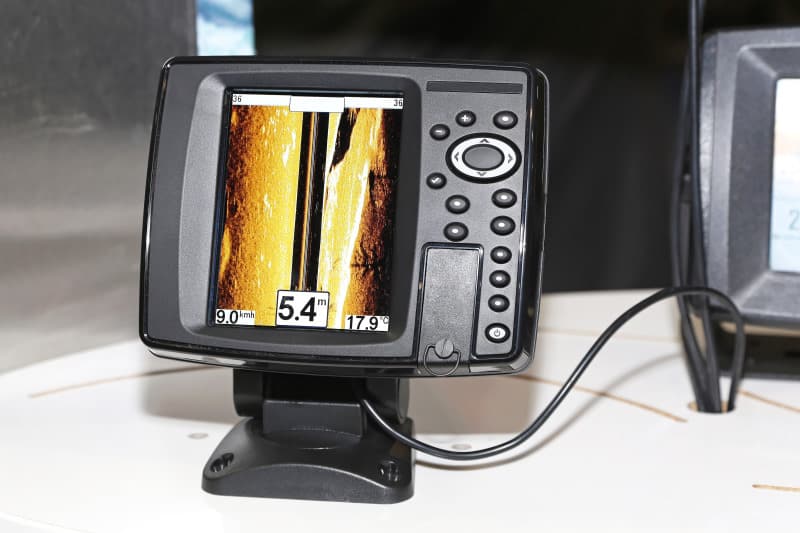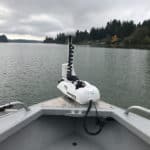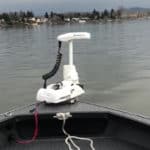So, NMEA 2000, right? What is it? Do you eat it or wear it? Well, you can’t do any of them with it. In simple words, NMEA 2000 is a communication standard that connects different boat equipment together or in other words, it lets your devices talk to each other.
With the help of a NMEA 2000 you don’t have to spend hours attaching every device with other devices. In this guide, I will discuss NMEA 2000 and its uses and about some of the renowned companies in this industry. Let’s get started.
What is NMEA 2000?
What’s the full form of NMEA? Nutella Marine Eating Association? No, it is National Marine Electronics Association. NMEA 2000, which is also known as N2K, is a communication standard that can connect different devices in a bus system, like GPS, Sonar, Radar, VHF radio on your boat or ship.
For example, let’s say you have a Chartplotter(AKA fish finder) that receives GPS signals. Many devices need GPS signals like your radar or VHF radio. So, a NMEA 2000 network can connect all these devices. If you don’t use a NMEA 2000, then your electronic devices will not work together and will get inconsistent information.
This can be a problem, especially if your boat is large and you have lots of different electronic devices.
Components of NMEA 2000 network
NMEA 2000 network is made up of lots of components, but they can be classified into five major components:
- Physical Layer- This layer defines the electrical and mechanical aspects of the physical link between network connections and references the characteristics of the devices and network interfaces to be used in NMEA 2000. This means that the layer denotes the relationship of physical devices with the network.
- Data Link Layer- As the name says, this layer carries or transfers data from one network node to another. NMEA is connected to lots of different devices, so a data link layer is important to connect all the small network nodes to the main network.
- Network Management- Data Link Layer connects different nodes, but if there is no manager, then things will go haphazardly. That’s where the network management comes into play. It claims and assigns address on the network, identifies devices that are connected with the network and initializes network at power-on.
- Network Layer- Now that we have learned about the regular employee (Data Link Layer), the manager (Network Management), its time to learn about the boss that is the network layer. Like a boss or the head in a company, Network Layer looks after everything and interacts with other companies, i.e. with other networks. This layer is not necessary for all NMEA 2000. It is only necessary if one network is not enough to support all the devices on the boat or ship.
- Application Layer- This is the last layer of the current version of NMEA 2000. After all the data is collected and read, this layer transforms into a form in which we can understand. For example, if you want to know the direction of the wind, then the computer generates some codes which may simply go over our head, but the application layer translates it into a proper statement or number like ‘Wind is in north direction or wind is 60° north’.
Benefits of a NMEA 2000 Network
We have learned about the functions of the different components of a NMEA 2000 network. Now, let’s see what all the components can achieve by working together as a team. The basic benefits or uses of a NMEA 2000 network are:
- NMEA 2000 connects all the different devices on the boat and thus helps you to get what you want in a split second.
- NMEA 2000 Shares all the information between devices so the user (you) can access information from multiple devices on one display.
- NMEA 2000 gives every device an address ranging from 0 to 256 ensuring that devices don’t get mixed with each other.
- NMEA 2000 gives us a 250 Kilobits/second data rate, which is much better than its previous version NMEA 0183.
- It is considered as one of the best innovations in the boating industry.
Some Renowned Manufacturers of NMEA 2000
Now its time to see and learn about some of the renowned companies in the NMEA 2000 industry.
Garmin NMEA 2000
Garmin is an American multinational technology company that specializes in making GPS technology for automotive aviation, marine, outdoor, and sports activities. Their smartwatches and activity trackers are also very popular in the market. Garmin also manufactures NMEA 2000 accessories and they are considered one of the best companies in the industry. Garmin uses NMEA 2000 micro connectors on units, sensors, and T-connectors that are compatible with other NMEA 2000 micro connectors, cables, and NMEA 2000-compatible devices. Garmin sensors may be packaged with a drop cable and a T-connector. Garmin displays may also include additional NMEA 2000 components (such as a power cable). Though there are many competitors in this business, Garmin tries to maintain a friendly relationship with other companies to ensure healthy competition. A worker from Garmin mentioned in Quora that the employees in the office are very friendly. They come to the office wearing casuals, and employees generally work for 40 hours a week.
Lowrance NMEA 2000
Lowrance is a manufacturer of consumer sonar and GPS receivers, as well as digital mapping systems. The company is best known for its High Definition Systems (HDS) and add-on performance modules. The Lowrance NMEA 2000 Network Starter Kit includes everything you need to hook up your depth finder to your boat’s engine. The kit is used to start an NMEA 2000 network. Individual parts of the network can be added as needed, such as sensors and displays. The biggest competitors of Lowrance are Sinead LTD, Raymarine Inc, Trimble Inc etc. Lowrance maintains a friendly relationship with its opponents though some occasional conflicts occur between them. But the most important thing about Lowrance is that they can understand their customers which is very important in marketing.
Humminbird NMEA 2000
Humminbird is part of the Johnson outdoor products family, which covers a large number of boating items. Like Garmin and Lowrance, Humminbird also manufactures marine technologies, including fish finders, NMEA 2000, Dual Beam Sonars. But its biggest reputation in the market is that they are considered one of the finest manufacturers of fish finders. Humminbird doesn’t sell kits for NMEA 2000. Instead, they prefer selling individual items. Piecing a system together may be a problem for many people but this is their style. Humminbird tries to maintain a good relationship with other companies but small clashes occur multiple times in a year. Humminbird says, “Revealing the water’s secrets to help anglers pursue their passion for the sport: it’s what we’ve done since the first fish finder we developed as Techsonic Industries in 1971, and it’s what we’ll always do.” Interesting words, right?
NMEA 2000: Everything you need to know (FAQs)
First – what’s an NMEA 2000, and how does it impact on your life?
Well, the NMEA is the National Marine Electronics Association is a communication standard that lets you connect different data and comms systems on your boat for a more coordinated end result. Through the NMEA 2000, you can connect systems like your sonar, radar, VHF radio and your GPS into an effective electronic information system.
How do I connect my NMEA 2000?
Most NMEA 2000 components are relatively plug and play, but there are things to remember.
For instance, making sure that the drop cables you use are as short as is practically possible, because one of the last and least useful things you need on a boat are dangling cables.
Avoid using endless successions of T-connectors too – the more of them you use, the more points of vulnerability and even potential dropout you create. Use just the sides of your T-connectors to make your system’s backbone. And under no circumstances forget your terminators – T-connectors need a female terminator on one end and a male terminator on the other.
In terms of power, use only 12-Volt batteries to power your NMEA 2000 system.
What is the difference between NMEA 2000 and 0183?
The difference between NMEA 2000 and NMEA 0183 is essentially analogous to the difference between posting something to a private Instagram or Facebook group with a handful of members and posting something in direct messages to each specific member of the group.
NMEA 0183 is based on 1-to-1 connections between devices. As such, it can be relatively slow in relaying information to the whole system. It has lag in the system by virtue of this 1-to-1 communication using RS232/RS422. It also requires multiplexers and buffers to connect devices ‘together’ within the communication structure.
NMEA 2000 allows all the devices in the ‘group’ or system to communicate simultaneously through a CAN (Controller Area Network) bus. So, NMEA 2000 simplifies the connection and speeds up the communication and the time-critical relevance of any data exchanged between the devices.
Why does NMEA 2000 need power?
The flippant answer to this is because without it, the connecting system between your devices will just lie there, sulking like a dead dog on a hot day.
The less flippant answer is relatively similar. Each of the individual devices in an NMEA 2000 system have a power source. The connecting network – the backbone and T-connectors – acts as a separate ‘device’ in its own right, which means to make it work, it needs its own 12-Volt power supply. Without power to the backbone and T-connectors, you do not have an NMEA 2000 system. You have a lot of individual components, individually doing their own individual things.
But the whole point of the NMEA 2000 protocol is that it speeds up – and therefore makes more relevant in real-time – the combination of data from various sources. More relevant, timely data means greater situational awareness out on the water.
How do I know if my NMEA 2000 is working?
The engineer’s answer to this question would of course be “Kick it and see if it reacts.”
A more scientific way of finding out if your NMEA is working would be to check your chart plotter. If the NMEA is working, you should see inputs from all the devices in the system.
Seeing which devices are supplying data to your chart plotter allows you to a) understand if the system is working at all, and b) if it’s only partially working, to narrow down which inputs aren’t sending in their data, to speed up your troubleshooting efforts.
If it looks as though one or more of your devices is not sending data to the chart plotter, the first thing to check if the devices themselves are working, and if they’re giving indications that they’re sending data to the chart plotter.
If they’ve stopped working, try repowering them. If nothing happens, what you have is a faulty device. If they seem to be working as advertised, check the T-connectors, from the closest to the device all the way back to the chart plotter.
Can NMEA 0183 Connect to NMEA 2000?
The answer to this vexed question is yes, it can – but it needs a helping hand to do it.
Speaking specifically, it needs a gateway or bi-directional converter to get the 1-to-1 0183 to be able to send and receive data to the many-to-many NMEA 2000. Of course, as we’ve seen, an NMEA 2000 system also needs a backbone of drop connectors and T-connectors, which you won’t have needed for your NMEA 0183 system.
The connection process is usually a lot easier and smoother if both your chart plotter and at least your AIS receiver are of the same generation (either both 0183 or both 2000), but it can still technically work if they’re of different generations. If they’re both 0183, you’ll need to connect the two together, and then connect one of them to the bi-directional converter or gateway.
The converter should draw power from the NMEA 2000 backbone, so you shouldn’t need additional power supplies for it.
If your bi-directional converter is wi-fi-enabled, it will come with its own driver to install and run. If it comes on a handy USB stick, just insert and go. The converter should allow your 0183 technology to feed into the backbone and get you up to date.
Are NMEA 2000 connectors waterproof?
Given that the backbone carries an electric charge that connects all your navigational data devices together, you might have reasonably hoped that the connectors that form the ‘vertebra’ of the backbone are waterproof.
You might have reasonably hoped in vain.
The issue here is that “waterproof” is a very distinct term, with highly specific and limited definitions. For something to be waterproof, it needs to resist water ingress when fully submerged more or less either until a stated time has elapsed, or until its state has changed.
The point about the connectors on your NMEA 200 system is that if they’re fully submerged for a significant length of time… there’s every likelihood that you have bigger problems to think about. Like that whole “breathing” deal.
Most manufacturers of NMEA 2000 connectors, therefore, don’t make the claim that they meet the standards of IPX8 or IPX9K, which they would pretty much have to in order to be thought of as “waterproof.”
“Water-resistant,” is a standard most manufacturers are willing and able to meet. So your NMEA 2000 connectors are water-resistant, rather than waterproof.
How many devices can connect to NMEA 2000?
The protocol directs that any NMEA 2000 system should allow for the connection of up to 50 separate devices to the backbone at one time. It also says that you should be able to remove any number of devices without causing any network conflicts.
Conclusion
Nowadays, NMEA 2000s have become a must for both small and large boats alike. After reading so much about this electronic standard, you can understand its importance in the marine world. A few decades ago, people used to struggle to connect all the devices together on their boat. Now, NMEA 2000 has made the process a piece of cake.
I hope this article has helped to get a basic idea about NMEA 2000.
For more learning check out our articles below
Best gauge wire for a 24 volt trolling motor?
What size trolling motor do I need for my boat?
All You Need to Know About Circuit Breakers for Your Electric Trolling Motor



